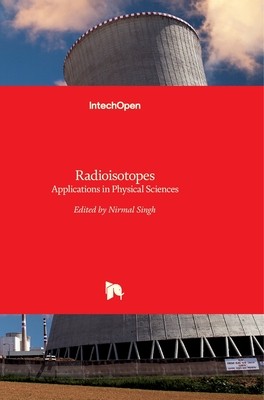
- We will send in 10–14 business days.
- Publisher: IntechOpen
- Year: 2011
- Pages: 512
- ISBN-10: 9533075104
- ISBN-13: 9789533075105
- Format: 17 x 24.4 x 2.9 cm, hardcover
- Language: English
- SAVE -10% with code: EXTRA
Radioisotopes (e-book) (used book) | bookbook.eu
Reviews
Description
The book Radioisotopes - Applications in Physical Sciences is divided into three sections namely: Radioisotopes and Some Physical Aspects, Radioisotopes in Environment and Radioisotopes in Power System Space Applications. Section I contains nine chapters on radioisotopes and production and their various applications in some physical and chemical processes. In Section II, ten chapters on the applications of radioisotopes in environment have been added. The interesting articles related to soil, water, environmental dosimetry/tracer and composition analyzer etc. are worth reading. Section III has three chapters on the use of radioisotopes in power systems which generate electrical power by converting heat released from the nuclear decay of radioactive isotopes. The system has to be flown in space for space exploration and radioisotopes can be a good alternative for heat-to-electrical energy conversion. The reader will very much benefit from the chapters presented in this section.
EXTRA 10 % discount with code: EXTRA
The promotion ends in 19d.14:18:55
The discount code is valid when purchasing from 10 €. Discounts do not stack.
- Publisher: IntechOpen
- Year: 2011
- Pages: 512
- ISBN-10: 9533075104
- ISBN-13: 9789533075105
- Format: 17 x 24.4 x 2.9 cm, hardcover
- Language: English English
The book Radioisotopes - Applications in Physical Sciences is divided into three sections namely: Radioisotopes and Some Physical Aspects, Radioisotopes in Environment and Radioisotopes in Power System Space Applications. Section I contains nine chapters on radioisotopes and production and their various applications in some physical and chemical processes. In Section II, ten chapters on the applications of radioisotopes in environment have been added. The interesting articles related to soil, water, environmental dosimetry/tracer and composition analyzer etc. are worth reading. Section III has three chapters on the use of radioisotopes in power systems which generate electrical power by converting heat released from the nuclear decay of radioactive isotopes. The system has to be flown in space for space exploration and radioisotopes can be a good alternative for heat-to-electrical energy conversion. The reader will very much benefit from the chapters presented in this section.


Reviews